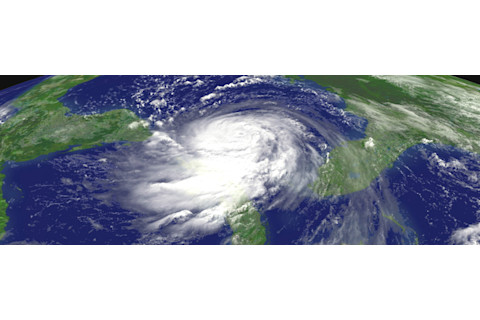Each year, hurricane season brings a series of these enormous storms marching across the Atlantic and eastern Pacific oceans, but that is the only truly predictable thing about them. In the wake of the devastating 2005 season (the year of Katrina and Wilma), scientists have been ramping up their efforts to understand how hurricanes develop and move. This year NASA launched the Genesis and Rapid Intensification Processes mission, which includes an unmanned drone that can measure conditions right in the heart of a storm. Meanwhile, sophisticated new weather models— such as one based on sea surface temperatures, developed by researchers at Florida State University—are bringing remarkable improvements in hurricane prediction.

Image: NOAA | NULL
Cyclone Cylinders Huge cloud columns called hot towers may develop in the eyewall and in the bands of rain swirling outward from it. These towers release tremendous amounts of heat, giving the hurricane an energy boost. Three-dimensional images of hurricane Katrina from the Tropical Rainfall Measuring Mission satellite captured nine-mile-tall hot towers emerging right before the storm intensified to a category 5. A NASA analysis indicates that a hurricane is twice as likely to get stronger in the next six hours when such hot towers form.
Serene Center Even as the outer winds reach speeds of 150 miles per hour, the eye remains remarkably calm, with winds near zero mph. But NASA found that the eye is not as benign as it appears. A combination of computer simulations and observational data reveal that air pockets from the eye can transport heat and moisture into the surrounding storm, increasing the hurricane’s intensity.
Circle of Power Surrounding the eye is the eyewall, a hoop of heavy rain and violent winds. This past June scientists at NASA’s Stennis Space Center in Mississippi reported that the eyewall’s extreme conditions can stir up ocean currents 300 feet below the surface, disrupting sediment and organisms on the seafloor for as long as a week after the storm subsides. A major hurricane could even threaten undersea oil pipelines.
Spawned by the Sea Atlantic hurricanes often develop over equatorial waters off the African coast, where colliding winds generate thunderstorms fueled by warm, humid air. Scientists have debated intensely whether rising global temperatures will lead to more hurricanes. A January study from the National Oceanic and Atmospheric Administration suggests that a warmer planet will generate fewer storms overall, but those that do form will be stronger.














